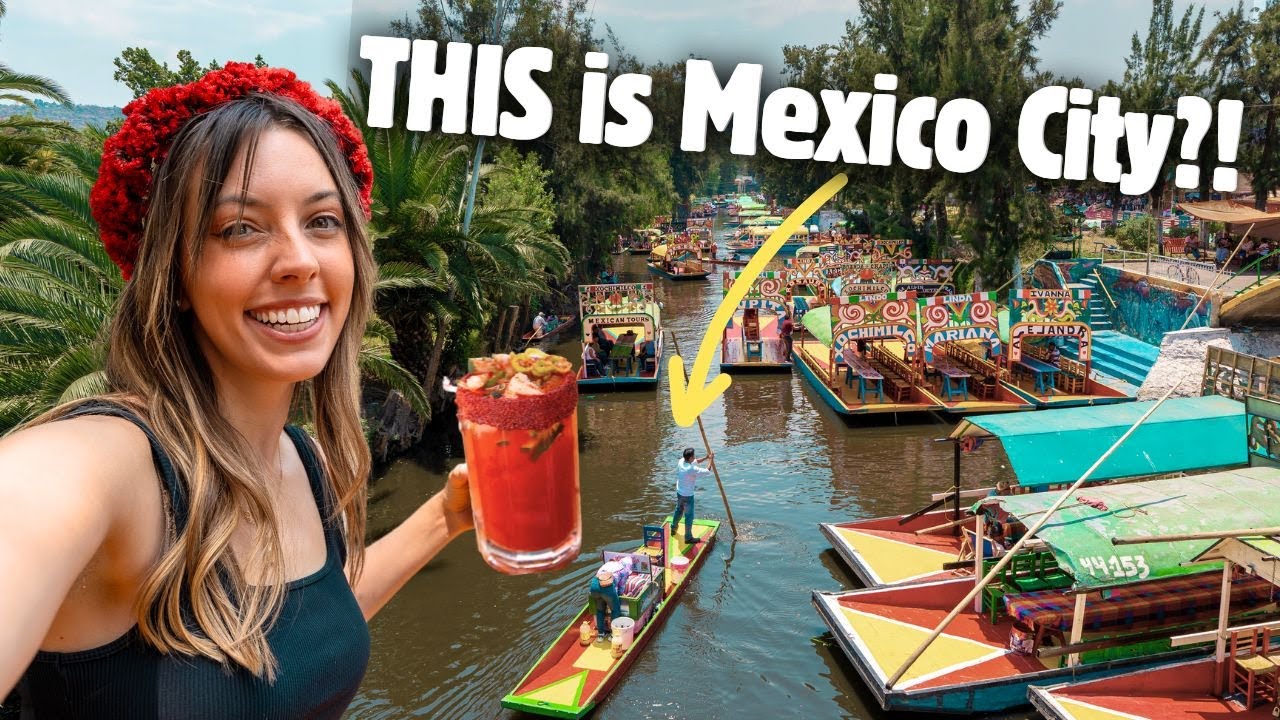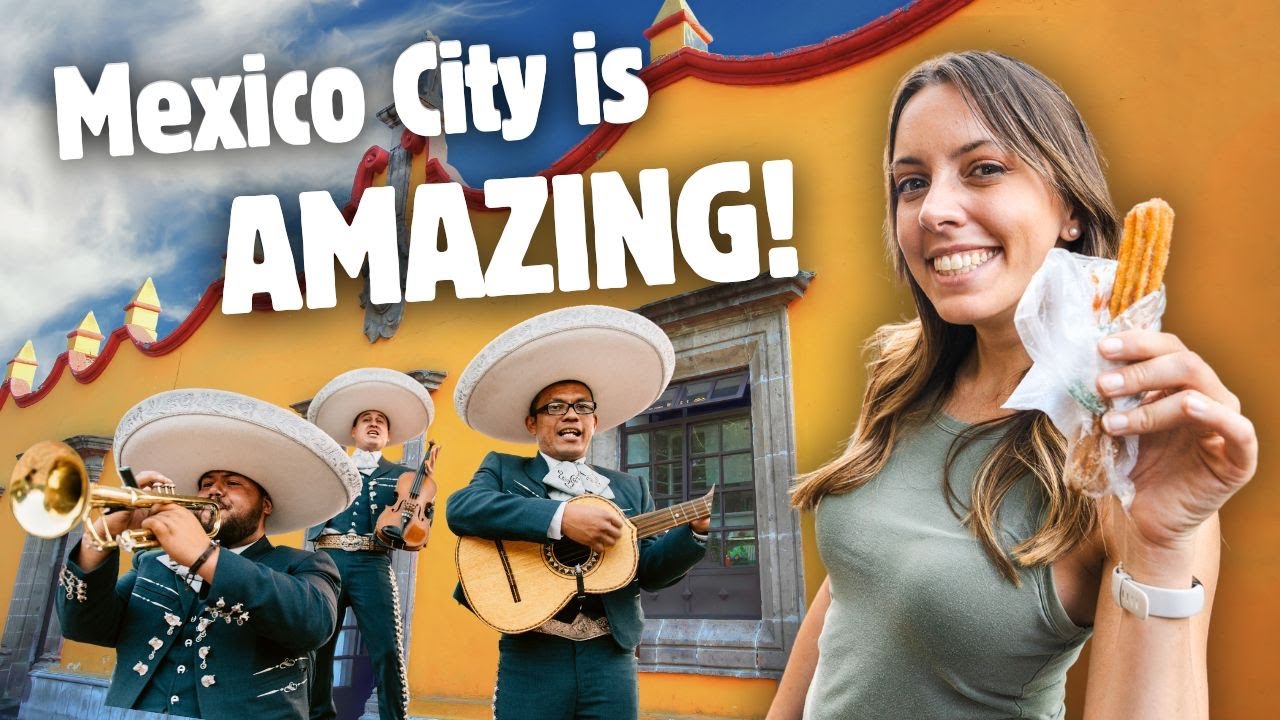TL;DR Parque Nacional Desierto de los Leones is Mexico City’s closest big-forest escape: a 1,800–1,900-hectare national park with pine-oak forests, a historic Carmelite convent, well-loved trails for hiking, cycling and horseback riding, and easy day-trip access from CDMX. I’ll walk you through how I get there, what trails and activities I favor, where to park and what to pack, plus rules and conservation notes backed by SEMARNAT/CONANP and city sources so you arrive prepared and respectful.
Parque Nacional Desierto de los Leones Mexico City: Your Ultimate Guide to Nature and Adventure
I’ve been visiting Desierto de los Leones for years whenever I need the kind of quiet only an old forest can provide. From misty mornings under firs to afternoons exploring the ex-convent and steep singletracks for cyclists, this park offers varied experiences within a short drive of the city. Below I share practical, experience-based advice and official-context facts so you can plan a safe, memorable trip.
What and where it is — quick facts I rely on
Desierto de los Leones is one of Mexico City’s oldest and largest protected green areas. It sits in the Sierra de las Cruces on the western edge of the Valley of Mexico, straddling the alcaldías of Cuajimalpa and Álvaro Obregón. Official sources place the park at roughly 1,866 hectares and note its protected status under Mexico’s national park system since the early 20th century (established as a national park in 1917) (Wikipedia; CONANP).
The term “desierto” here is historical: it refers to a sparsely populated wild area rather than an arid landscape. The park’s heart is the Carmelite convent complex, dating back to the 17th century, which remains a cultural focal point (SEMARNAT).
Why I keep coming back
- Immediate contrast with the city: You gain about 700–800 meters of altitude and markedly cleaner air within 20–30 km of central CDMX (Lonely Planet; CDMX government pages).
- Forest variety: stands of pine, fir, oak, ash and a cool understory that shelters birds and mammals — I’ve counted many bird species on a single morning walk (CDMX; CONANP).
- History and architecture: walking the convent and its chapel is like stepping into three centuries of local history (SEMARNAT).
- Accessible adventure: well-marked hiking routes, a popular cycling circuit, and guided horseback rides make the park friendly to different fitness levels.
Top experiences — what I recommend
- Short historic loop: start at the ex-convent (El Carmen) for architecture and easy walking.
- Forest hikes: trails range from gentle circuits to more sustained ascents into the Sierra de las Cruces.
- Mountain biking: there are established routes used for training and competition; bring a capable bike and helmet (CONANP; CDMX).
- Horseback riding and picnics: family-friendly; local operators offer rides near the main entrance (SEMARNAT).
- Birdwatching and photography: early morning is best; you’ll see dozens of species if you’re patient (CDMX).
Trail and activity comparison
| Activity/Route | Typical length / time | Difficulty | Best for |
|---|---|---|---|
| Convent & short loop (zona del convento) | 1–2 km / 30–60 min | Easy | Families, culture, photography |
| Forest hiking trails (longer circuits) | 5–12 km / 2–5 hrs | Moderate to challenging (elevation gain) | Hikers seeking solitude and views |
| Mountain bike circuit (ruta ciclista) | Variable; circuits of 10–30 km | Moderate–hard (technical and climbs) | Runners & cyclists training |
| Horseback riding & picnic areas | Variable / 1–3 hrs | Easy–moderate | Families and casual riders |
History and culture — what informs the park’s identity
The park owes much of its name and early use to the Carmelite monks who established a convent in the early 1600s; the monastery complex remained a center of religious life through the 19th century (SEMARNAT). Later, the area served military and strategic roles (mid-1800s records), giving the landscape layers of cultural memory. Today the convent is the park’s cultural anchor, surrounded by forests that have become a green lung for Mexico City (SEMARNAT; CDMX government pages).
Wildlife and ecosystems — what I’ve seen and official notes
Desierto de los Leones preserves temperate montane forest communities: pines, firs, oaks and associated understory. Official inventories and field guides note more than a hundred bird species, seven amphibians, nine reptiles and several dozen mammal records in the park zone; on my visits I’ve observed woodpeckers, jays, owls and small mammals like squirrels and occasionally evidence of larger mammals (CDMX; CONANP).
Practical Guide
Below I unpack exactly how I plan a visit, step-by-step. Follow this checklist and you’ll be ready for a safe, enjoyable outing.
Step 1 — Decide when to go
- Best months: late fall through spring are cooler and drier. Summer brings afternoon rains and clouds (CDMX).
- Weekdays: less crowded; weekends can be busy with families and events.
Step 2 — How to get there
If you drive, take the western roads toward Cuajimalpa and follow signs to Desierto de los Leones. There is parking near the main entrance; arrive early on busy days. Public transport is unpredictable — many visitors take taxis or ride-hailing services from central CDMX. Some websites and guides also recommend organized transfers for groups (Lonely Planet; CONANP).
Step 3 — Entry, permissions, and fees
The park is administered by CONANP and SEMARNAT; there is an entry fee in many protected areas and regulated activities (CONANP). Fees and hours can change, so I always check the official CONANP/park page before leaving. For special groups (large tours, research, or commercial filming) contact park authorities ahead of time.
Step 4 — What to pack
- Layered clothing (mornings can be freezing; afternoons warm up).
- Good hiking shoes or a capable mountain bike and helmet for cyclists.
- Water (1–2 L), snacks, sunscreen, hat, rain jacket in summer months.
- Binoculars and camera for wildlife and architecture.
- Cash for small vendors, parking or modest service fees; card acceptance is limited.
Step 5 — Safety and etiquette
- Stay on marked trails; the park protects sensitive forest and watershed areas (CONANP).
- Pack out your trash. Avoid open fires unless in designated picnic zones.
- If you bring a dog check current rules — policies can change and sometimes dogs are restricted (check CONANP updates).
- Altitude and temperature: expect cooler conditions and possible rapid weather changes; hikers should be ready to turn back if conditions worsen.
Step 6 — Suggested itineraries (my favorites)
Half-day: arrive 8:00–8:30, walk the convent loop, coffee at the nearby vendors, then 2-hour forest trail. Return by midday to avoid afternoon rain.
Full-day: add a longer hike into the Sierra de las Cruces or a mountain-bike loop; pack a picnic and stay for sunset from a higher viewpoint.
Rules and conservation — what the park expects
Desierto de los Leones is a protected national park managed by federal agencies (CONANP/SEMARNAT). That means regulated access, limits on land use, and conservation measures to protect watersheds and biodiversity. Simple rules I follow: no littering, no off-trail motorized travel, respect wildlife, and avoid loud music. If you’re planning commercial or research activities, obtain permits in advance from CONANP (CONANP; SEMARNAT).
Services — what you can expect on-site
- Basic visitor services near the main entrance: parking, public restrooms, food vendors and small shops.
- Guided tours and horseback providers operate locally; prices and availability vary by season (SEMARNAT).
- Events: on weekends you may encounter cultural or sporting events hosted inside park limits; these can increase crowds (CDMX government page).
Tips from my visits
- Start early for the best light and fewest people.
- Avoid summer afternoons because of frequent rain and cloud cover.
- Bring cash: some services don’t take cards.
- Respect closures: certain areas are off-limits for restoration or protection of species.
- Verify current conditions on official CONANP/SEMARNAT pages before you go; management rules and fees can change.
FAQs
Is Desierto de los Leones far from Mexico City?
Not really — it’s one of the city’s western escapes. From central CDMX expect roughly 20–40 minutes by car depending on traffic; public transit options exist but are less reliable, so many visitors choose taxis or private cars (Lonely Planet; CDMX government page).
Do I need a reservation or permit to enter?
For ordinary day visits you generally do not need a special permit, but there is often a modest entry fee and some activities or commercial uses require prior authorization from CONANP. I always check the official park page for current rules and fees (CONANP).
Are dogs allowed?
Policies can vary; parks sometimes restrict pets to protect wildlife and vegetative recovery. The last official recommendations encourage checking CONANP’s current guidance. If you bring a dog, keep it leashed, clean up after it, and avoid sensitive areas (CONANP).
Can I camp inside the park?
CONANP lists camping among possible activities in its broader ANP guides, but camping availability and allowed zones can be limited and may require permits. If you want to camp, contact park authorities in advance to confirm where and whether you need a reservation or permit (CONANP).
Is the park safe for solo hikers?
Daytime use is generally safe if you stick to marked trails, inform someone of your route, carry water and a charged phone. I recommend avoiding isolated areas alone late in the day and checking weather and park notices beforehand. If you’re uncertain about a route, join a guided group or go with a partner.
Are guided tours available?
Yes — local guides offer historical walks, birdwatching tours and horseback trips. For specialized naturalist tours or group visits, book in advance as guides can fill up on weekends (SEMARNAT; CDMX).
What wildlife might I realistically see?
Birds are the easiest wildlife to spot: woodpeckers, jays and raptors among others. Small mammals (squirrels) are common; sightings of larger mammals are rarer. The park’s official inventories list dozens of species across birds, mammals, reptiles and amphibians (CDMX; CONANP).
Final notes — be a thoughtful visitor
Desierto de los Leones is one of Mexico City’s most valuable natural and cultural resources. My best advice is to plan deliberately: check official CONANP/SEMARNAT updates before you go, arrive early, respect park rules, and bring basic gear. Whether you want a quiet walk among centuries-old trees, a cultural stop at the convent, or a technical bike ride, this park rewards visitors who come prepared and leave no trace.
If you want, I can build a custom half-day or full-day itinerary based on your fitness level, whether you’re going with kids, or if you prefer cycling versus hiking — tell me how much time you’ll have and I’ll map it out.
Martin Weidemann is a digital transformation expert and entrepreneur with over 20 years of experience leading fintech and innovation projects. As a LinkedIn Top Voice in Digital Transformation and contributor to outlets like Forbes, he now brings that same expertise to travel and mobility in Mexico City through Mexico-City-Private-Driver.com. His focus: trustworthy service, local insights, and peace of mind for travelers.



